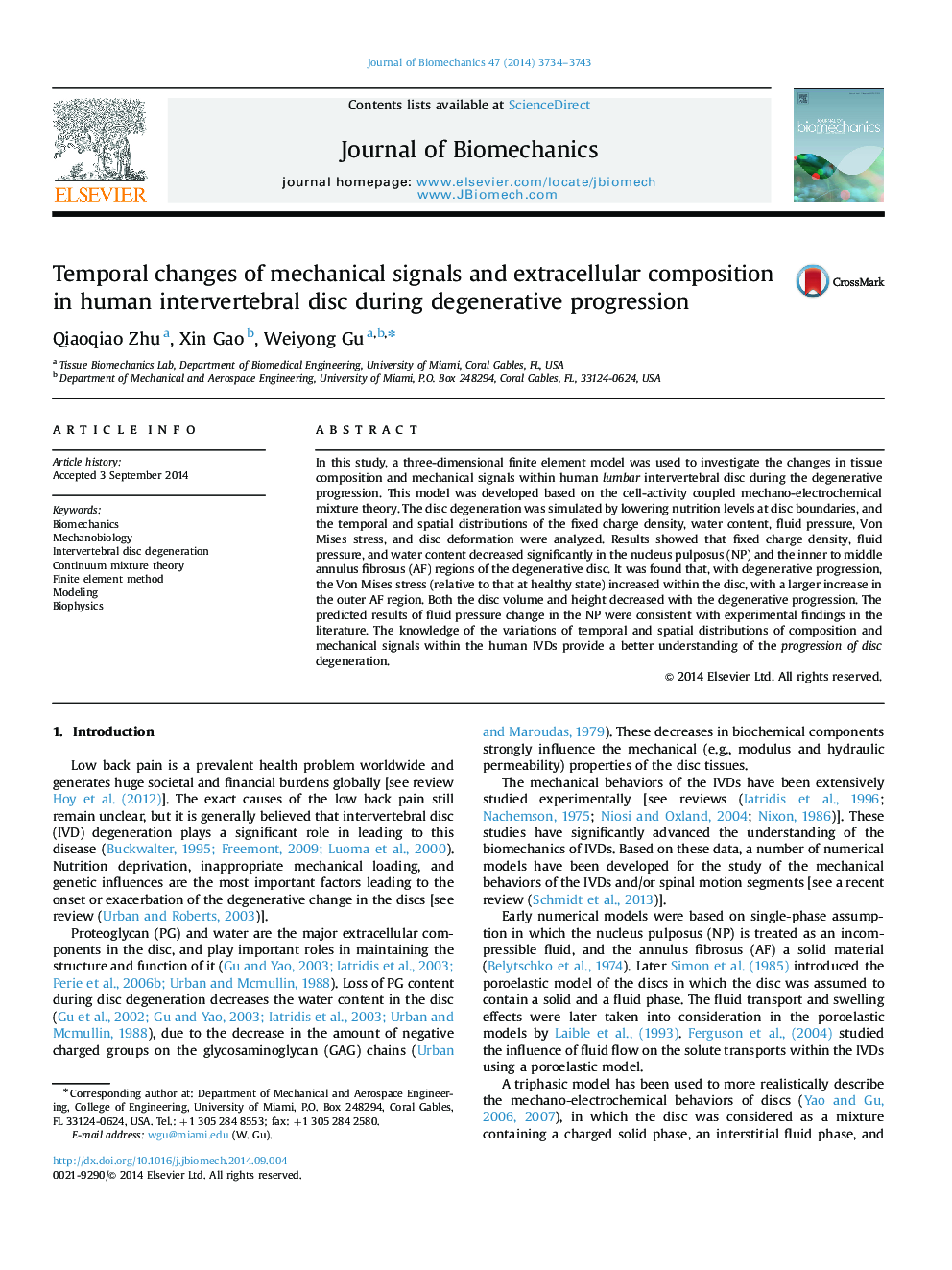| Article ID | Journal | Published Year | Pages | File Type |
|---|---|---|---|---|
| 872040 | Journal of Biomechanics | 2014 | 10 Pages |
In this study, a three-dimensional finite element model was used to investigate the changes in tissue composition and mechanical signals within human lumbar intervertebral disc during the degenerative progression. This model was developed based on the cell-activity coupled mechano-electrochemical mixture theory. The disc degeneration was simulated by lowering nutrition levels at disc boundaries, and the temporal and spatial distributions of the fixed charge density, water content, fluid pressure, Von Mises stress, and disc deformation were analyzed. Results showed that fixed charge density, fluid pressure, and water content decreased significantly in the nucleus pulposus (NP) and the inner to middle annulus fibrosus (AF) regions of the degenerative disc. It was found that, with degenerative progression, the Von Mises stress (relative to that at healthy state) increased within the disc, with a larger increase in the outer AF region. Both the disc volume and height decreased with the degenerative progression. The predicted results of fluid pressure change in the NP were consistent with experimental findings in the literature. The knowledge of the variations of temporal and spatial distributions of composition and mechanical signals within the human IVDs provide a better understanding of the progression of disc degeneration.
